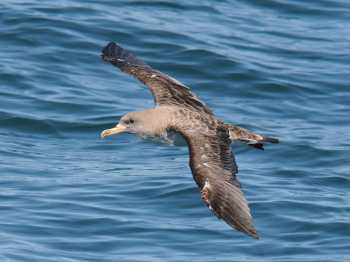Paulo Catry and colleagues writing in the Journal of Ornithology have looked at aging effects in foraging Cory's Shearwaters Calonectris diomedea (a potential candidate species for ACAP listing).
The paper's abstract follows
"It has long been known that birds change their behaviour, reproductive performance and survival as they mature, including in the first few years after recruitment into the breeding population. However, and contrasting with the description of patterns of actuarial and reproductive senescence in later years, there are surprisingly few studies documenting changes in behaviour in old individuals. Such studies are important, as birds provide particularly interesting models for studying the biology of senescence. It has been suggested that, unlike mammals, birds may remain physically fit until an advanced age, yet this has limited empirical support. In this paper, we used activity (immersion) loggers to show that old (>26 years) Cory's Shearwaters Calonectris diomedea are less active when foraging at sea, spend more time resting on the water and have a smaller number of take-offs and landings during darkness, when compared to experienced mid-aged individuals (13-20 years old). Old individuals also tended to have reduced immune response against an experimental challenge using phytohaemagglutinin. These results are in line with observed reductions in activity levels with age in a wide range of non-avian taxa, and may suggest that old seabirds are physically less fit than younger individuals. Alternatively, old birds might simply be more experienced and their reduction in activity might reflect a strategic regulation of investment in different activities. Our study illustrates the potential for gaining insights into avian aging patterns and processes by looking into the behaviour of model organisms. We therefore encourage more research focusing on behavioural parameters that may reflect variations in physical condition or strategic choices, during both the breeding and non-breeding seasons."

Reference:
Catry, P., Granadeiro, J.P., Ramos, J., Phillips, R.A. & Oliveira, P. 2010. Either taking it easy or feeling too tired: old Cory's Shearwaters display reduced activity levels while at sea. Journal of Ornithology DOI: 10.1007/s10336-010-0616-7.
John Cooper, ACAP Information Officer, 12 January 2011

 English
English  Français
Français  Español
Español